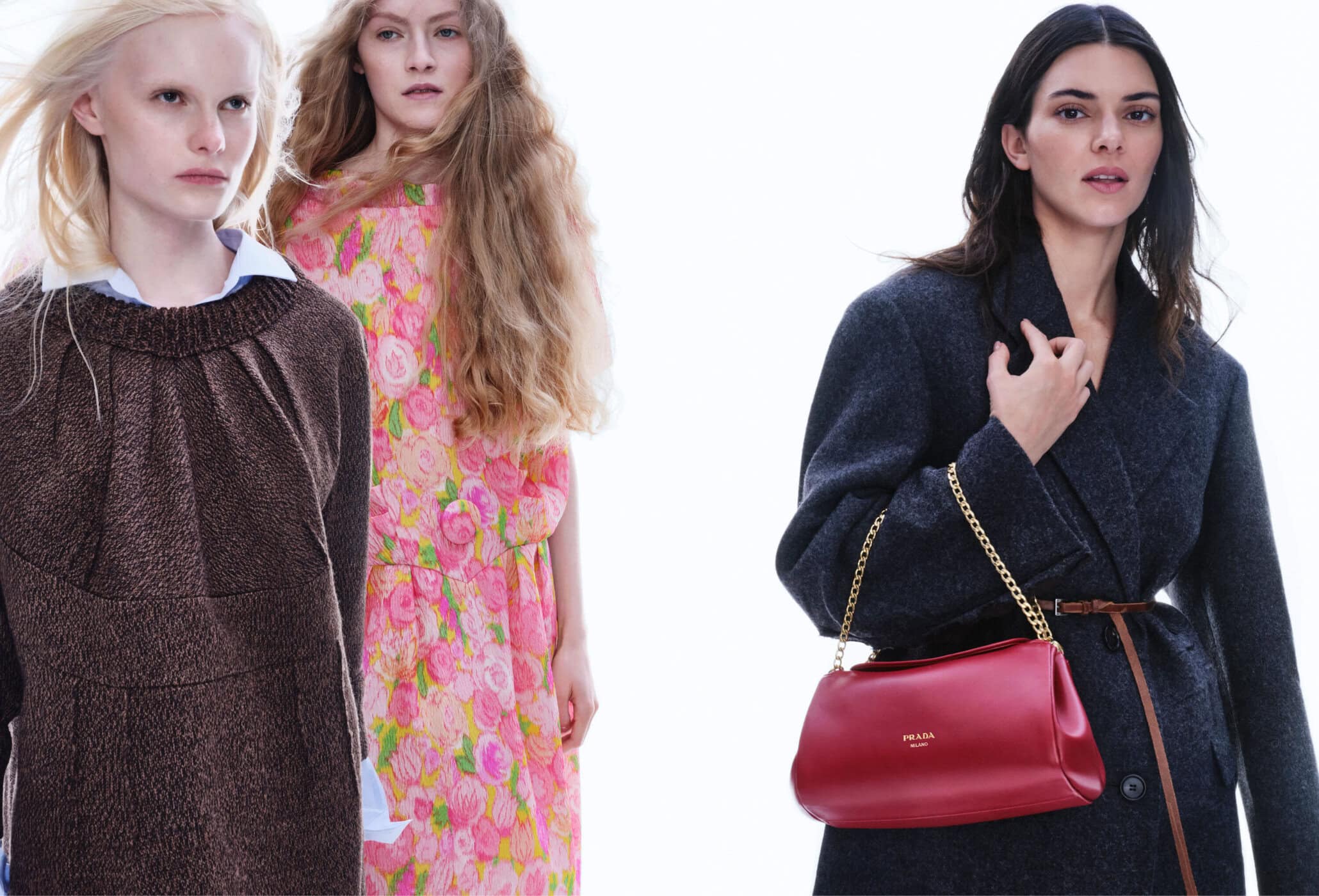While Prada brand sales soften, Miu Miu’s explosive growth and strategic clarity keep the group steady amid a turbulent luxury landscape.
Key Takeaways
- Miu Miu soared, with retail sales up 49% in H1 2025, now contributing 32% of Prada Group’s total revenue.
- Prada brand softened, with Q2 retail sales down 3.6%, reflecting tourism slowdowns and cautious consumer spending.
- Margins remained stable despite macro headwinds, with an adjusted operating margin of 22.6%.
- Versace acquisition on track, expected to close between September and November, with integration planned for early 2026.
- Americas and Middle East outperformed, while Japan and Europe lagged due to reduced tourist flows.
- Strategic focus continues on full-price positioning, product emotion, and consumer relationship-building across all brands.
Miu Miu Offsets Prada Slowdown as Group Focuses on Strategy, Stability
Prada Group posted an 8% increase in revenues to €2.74 billion for the first half of 2025, signaling resilience in an increasingly price-sensitive luxury market. While sales at the group’s flagship Prada brand contracted 3.6% in Q2, younger sibling Miu Miu delivered a striking 49% retail sales jump in the first half, now accounting for nearly a third of total revenues.
CEO Andrea Guerra, who has temporarily assumed oversight of the Prada brand following Gianfranco D’Attis’ exit, emphasized long-term vision and strategic focus amid continued macroeconomic volatility. “We are simply navigating in this new world,” Guerra told analysts, noting that product emotion, brand identity, and client intimacy are critical as luxury resets around a more cautious global consumer.
Footing the Group’s Growth
Miu Miu’s performance was the clear standout. Retail sales hit €780 million, up 49% year-on-year, supported by strength across categories and geographies. Q2 growth decelerated slightly to 40%, but the brand remains a cultural leader, topping Lyst’s Q2 hottest brands index. Strategic brand activations—from upcycling and personalization to literary salons—have fueled community engagement and deepened consumer connection. Guerra sees continued upside in leather goods and North America, with the recently opened London flagship reflecting the brand’s European rebalancing.
Meanwhile, Prada’s own-brand retail sales dipped 1.9% in H1, reflecting regional softness in Japan and Europe due to muted tourist flows. CFO Andrea Bonini cited improved sequential trends in the Americas and Asia-Pacific, but overall sales growth missed analyst expectations. Prada’s contribution to the group in Q2 was further pressured by tough comparables and a broader industry pullback, echoed in recent results from competitors.
Margins Hold, Versace Deal Looms
Despite topline headwinds, profitability held firm. Adjusted operating profit rose 8% to €619 million, with a margin of 22.6%, consistent with last year despite heightened brand investment. Group net profit was stable at €386 million.
The pending €1.25 billion acquisition of Versace remains on track for a late 2025 close. While Prada Group has yet to detail post-acquisition strategy, Guerra signaled a measured approach: “It’s important not to kill the baby while you cure it.” Integration is expected to begin in early 2026, with more clarity to follow.
Regional Trends & Forward Outlook
By market, the Americas grew 10% to €424 million, and the Middle East surged 24%. Europe rose 7% despite soft tourism, and Asia-Pacific posted steady 8% growth, with Japan moderating after an exceptionally strong 2024.
Guerra reaffirmed that Prada Group remains focused on full-price positioning, elevated hospitality, and product mix optimization—especially as pricing power and credibility at entry-level remain central to navigating a two-tiered consumer landscape.
“We’re not lowering prices,” he noted, “but we must remain credible.” Collections, he added, must resonate emotionally with aspirational and ultra-high-net-worth clients alike.
As Prada Group adapts to evolving dynamics, Miu Miu’s momentum, stable margins, and a cautious-but-confident integration plan for Versace suggest the group is playing a long game—one eye on the market, the other on its identity.
